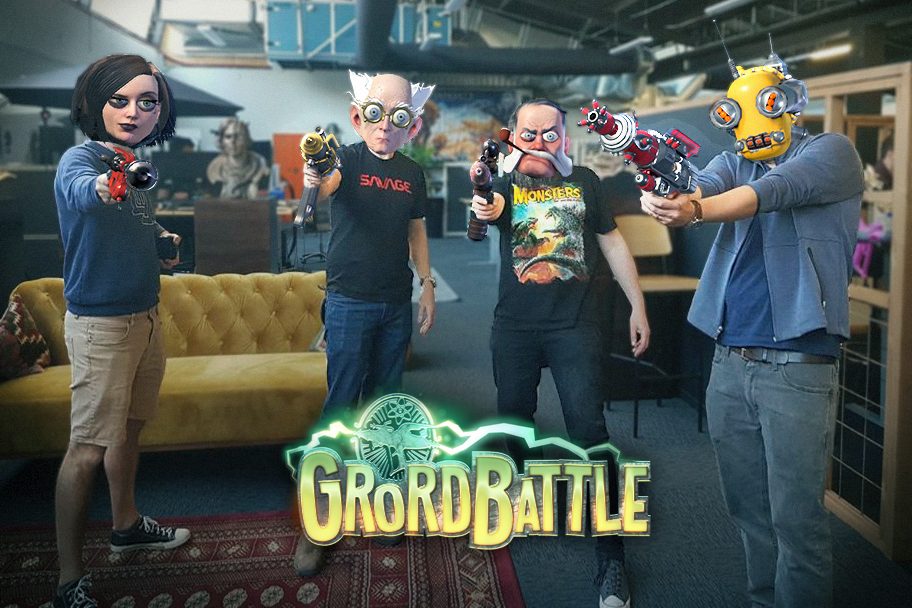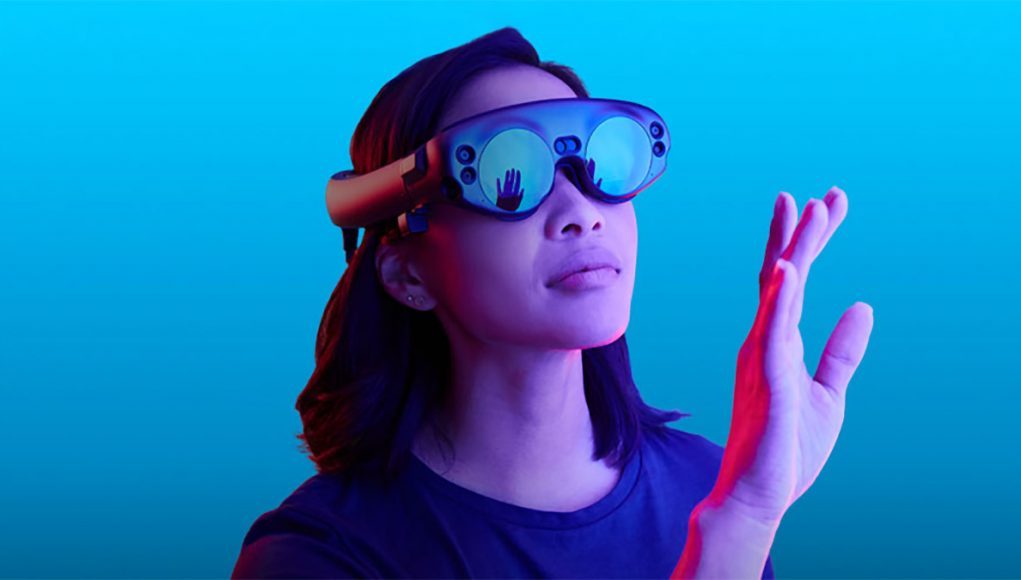Despite securing $280 million from Japan’s largest telecom earlier this summer, we’ve heard surprisingly little from the multi-billion dollar AR startup of late regarding its flagship headset, Magic Leap One. Now, the company has announced a number of new features coming to ML1 in its latest Lumin OS 0.97 and SDK 0.22 updates, which includes hand tracking with proper occlusion masking, “out of the box” multiplayer support, and a few other goodies that ideally position the platform to appeal to future consumers.
In Magic Leap’s last update, 0.96 (released in May), the company introduced full skeleton tracking of the hand, although now devs can access a hand mesh through API that the company says not only properly occludes the scene when your hand passes in front of it, but should let you hold virtual objects too.
Although hand tracking is getting some more love in this month’s update, the company says they’ve redesigned the interaction model of Lumin OS based around Control, the system’s single 6DOF controller.
Control is now “the default interaction” for Lumin OS, which includes tasks such as selection, placement, and extraction.
Multiplayer Improvements
The company first released its cloud ‘Map Merge’ function in February, which brought the ability for “2+ people” to have shared experiences on ML1. Map Merge is soon slated to be accessible to everyone as a public beta, which Magic Leap says will allow Lumin to support multiplayer scenarios “out of the box” through their PCF API.
The update is available today for Professional Developer package users, although the full roll out is said to land before the end of the month for everyone else.

While the company hasn’t mentioned whether or not they’re ever releasing Weta Workshop’s multiplayer experimental shooter Grordbattle, which was created to showcase the headset’s multiplayer function, the Map Merge pubic beta will technically let developers create large-scale multiplayer games starting today that the company says can span “over several floors within a medium-sized space (1500 sq feet or so),” or an app for 5-10 users, with 4-5 people in the same room and 10 people in other areas of the same building.
It can do more, Magic Leap’s senior vice president of software Yannick Pellet says, although these are the ideal parameters.
Accessibility, Third-party Integration & More
Pellet reports that this month’s big “consumer” reveal (inverted commas since the headset is intended for developers) is a music app called Overture. The first-party app is said to let third-party apps integrate with the company’s background music service to control the music in your environment. With Overture, you can pause and play a track, adjust the volume, skip to the next song, and perform other basic controls.
Here’s a quick rundown of some of the other features hitting ML1 with Lumin’s 6th OS update:
- Internationalization and localization for UK, France and Germany
- Officially support for Unity 2019.2 (binary builds for Unreal available through the Epic Launcher)
- OAuth support for 3rd-party apps through C API. Universe and Helio use a Secure OAuth Window as a preferred method of integrating OAuth services into an app
- Introduction of a new Direct Rendering API for improved stereoscopic rendering quality in immersive apps; allows users to render their own 3D content using WebGL
- Six-person calls in Avatar Chat
- Helio browser Dark Mode
- Helio browwer environment-based shortcuts/bookmarks
- Device Stream toolset (SDK), developers can access a device stream on their desktop
Check out Magic Leap’s full blogpost for more detail.







